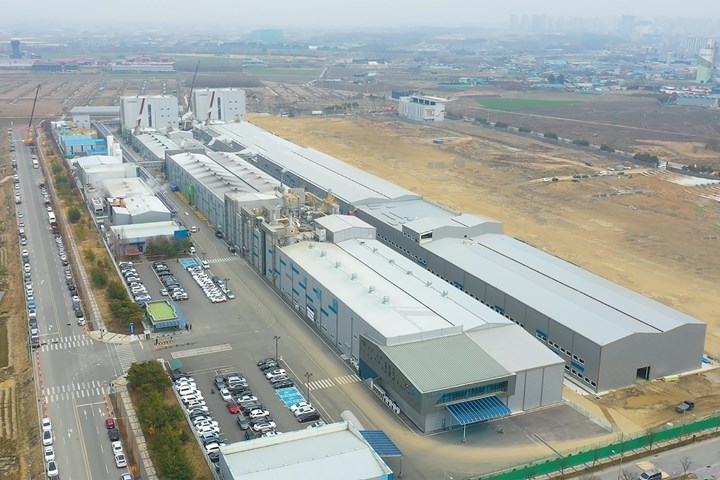Hyosung to add fourth carbon fiber line in South Korea
The $38.5 million expansion will bring the company’s total carbon fiber capacity to 9,000 metric tonnes per year.

Hyosung’s fourth carbon fiber line, with capacity of 2,500 MT, will be added to the company’s existing lines in JeonJu, South Korea. Photo Credit: Hyosung
Hyosung Advanced Materials (Seoul, South Korea) announced on March 2 that it will invest $38.5 million to expand carbon fiber production at the company’s JeonJu, South Korea, location. Expected to open in April 2023, this will be Hyosung’s fourth polyacrylonitrile (PAN) carbon fiber line and will add 2,500 metric tonnes of capacity, bringing the company’s total capacity to 9,000 metric tonnes per year. This is the third announced carbon fiber expansion following previous announcements by Hyosung in 2020 and 2021.
Hyosung says the purpose of this expansion is to meet growing demand for storage of ecologically friendlier vehicles fuels, such as hydrogen and natural gas. The revitalization of the hydrogen economy, in particular, is expected to drive demand for pressure vessels for storage of the gas, Hyosung says. Applications of carbon fiber pressure vessels include hydrogen-fueled vehicles, hydrogen fueling stations and hydrogen gas transport.
Hyosung’s carbon fiber, branded TANSOME, was developed in 2011 and is the first high-strength/high-strain fiber in Korea, based on the company’s proprietary technology. Hyosung has been manufacturing TANSOME at the JeonJu location since 2013.
Hyosung announced in 2019 a plan to invest more than $820 million by 2028 to achieve total carbon fiber production of 24,000 tons per year, with the ultimate goal of becoming one of the top three global carbon fiber manufactures with more than 10% global market share.
Related Content
-
Otto Aviation launches Phantom 3500 business jet with all-composite airframe from Leonardo
Promising 60% less fuel burn and 90% less emissions using SAF, the super-laminar flow design with windowless fuselage will be built using RTM in Florida facility with certification slated for 2030.
-
Cutting 100 pounds, certification time for the X-59 nose cone
Swift Engineering used HyperX software to remove 100 pounds from 38-foot graphite/epoxy cored nose cone for X-59 supersonic aircraft.
-
Carbon fiber composite pallet revolutionizes freight industry
LOG Point Pallet fuses advanced materials with innovative design and manufacturing to improve supply chains worldwide.



